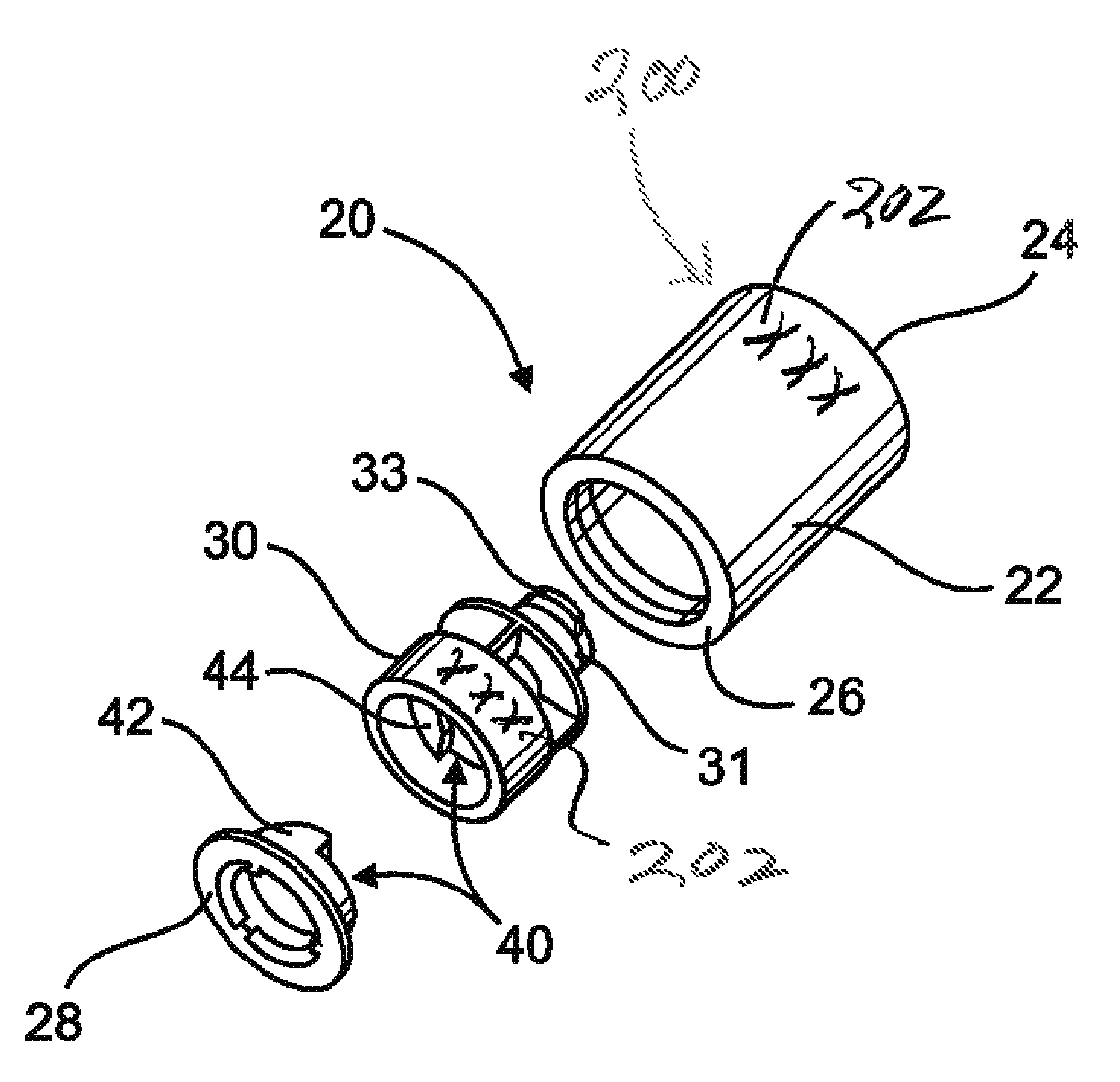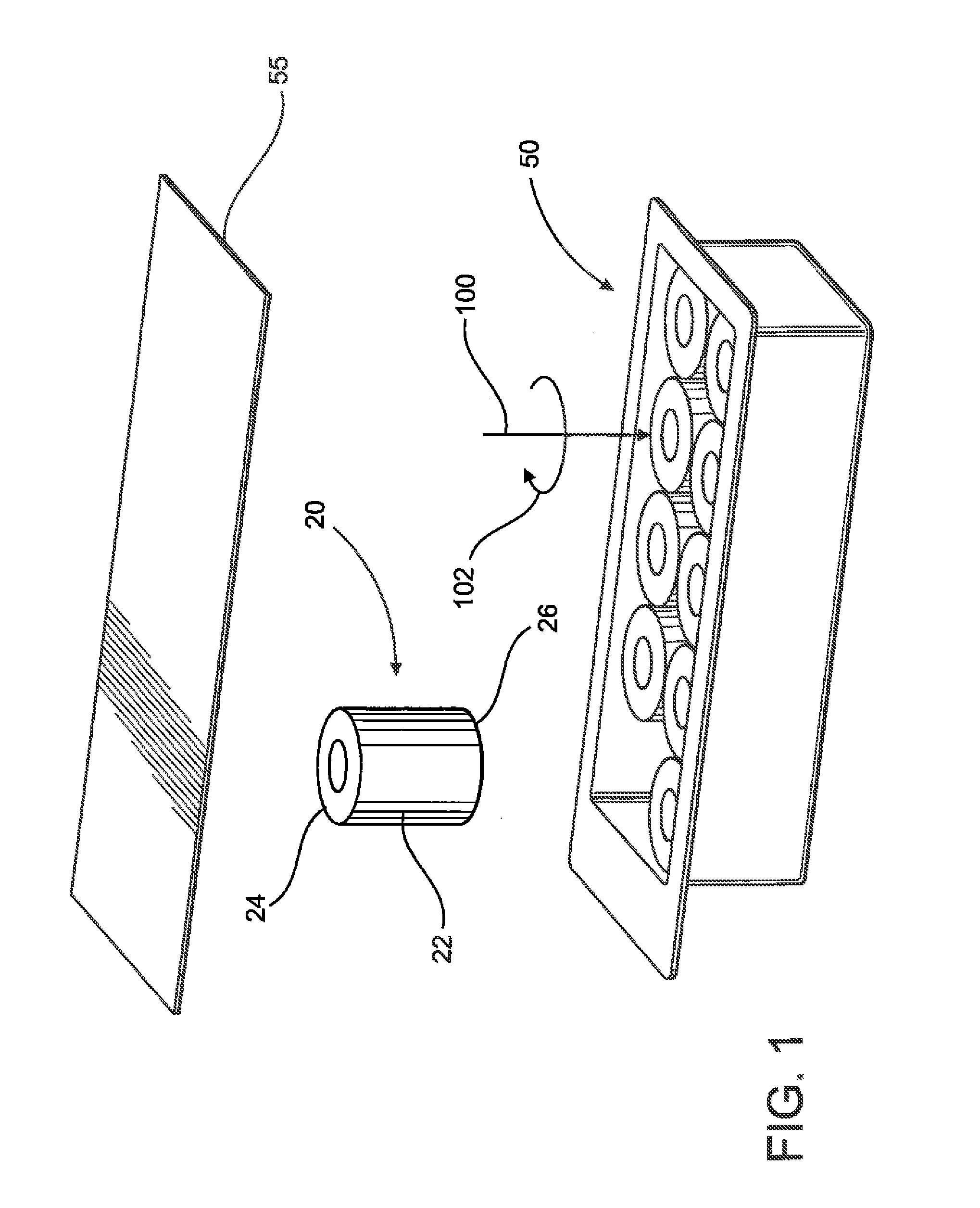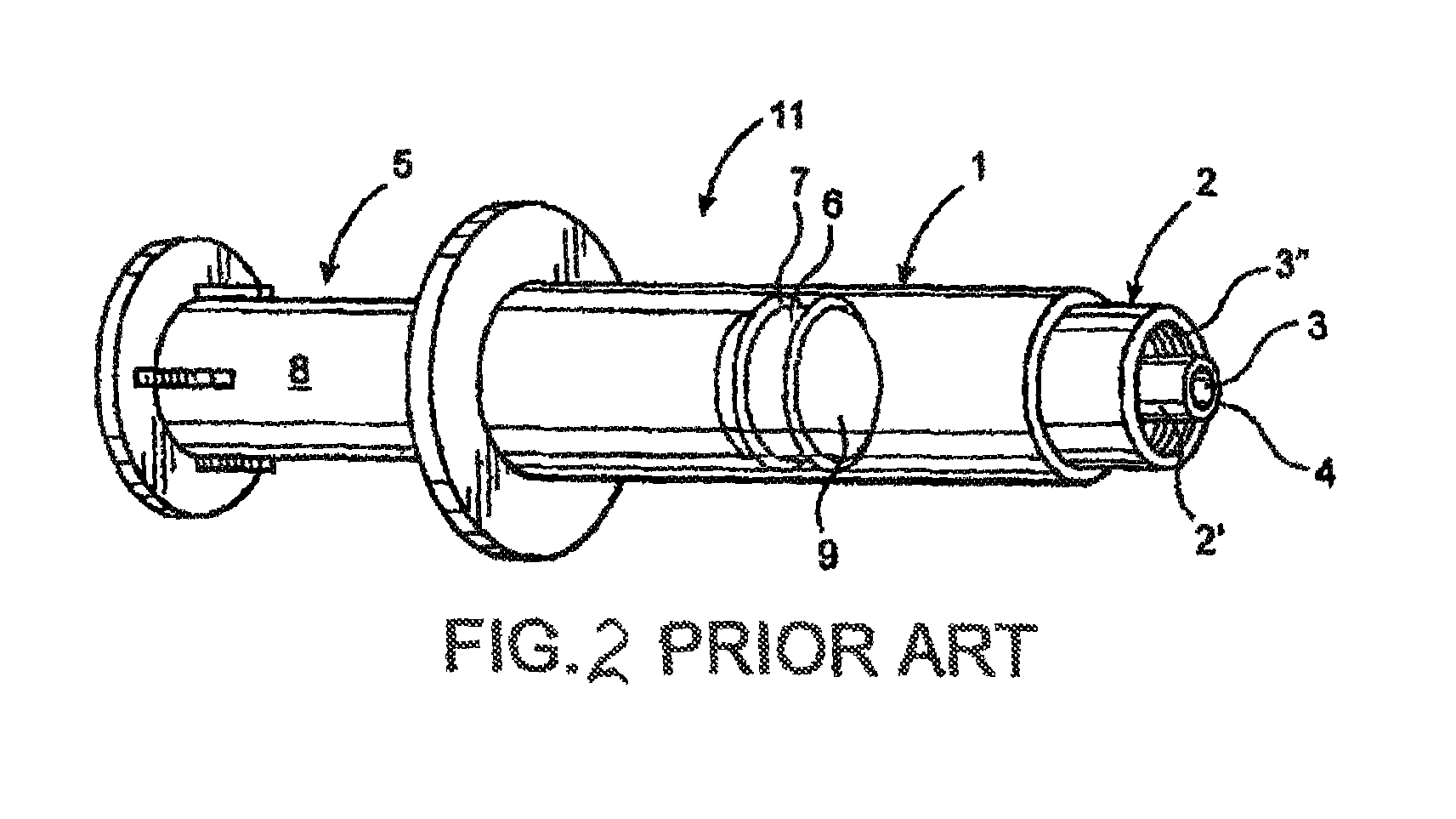Support and closure assembly for discharge port of a syringe and tracking system therefore
a technology of tracking system and support assembly, which is applied in the field of closure assembly, can solve the problems of increasing the chance of syringe contamination, dangerous and possibly fatal effects on patients, and tampering with pre-loaded syringes, so as to facilitate the rotational attachment of the syringe cap, facilitate the alignment of a portion, and achieve the effect of efficient operation
- Summary
- Abstract
- Description
- Claims
- Application Information
AI Technical Summary
Benefits of technology
Problems solved by technology
Method used
Image
Examples
Embodiment Construction
[0054]As indicated in the accompanying drawings, the present invention is directed to a closure generally indicated as 20, which is structured for use in combination with a conventional syringe 11, of the type disclosed in the prior art representation of FIG. 2.
[0055]In describing the structural and operative features of the present invention, reference will be made to a conventional or standard type syringe 11 as shown in FIG. 2 labeled as “Prior Art.” As such, the syringe 11 typically includes a barrel 1 and a nozzle structure 2. The barrel 1 comprises an elongate interior chamber disposed in fluid communication with an axial passageway or channel 3 on the interior of the nozzle portion 2′. Also, the nozzle portion 2′ may comprise a luer type fitting. The channel 3 is to be considered a portion of the nozzle structure 2 and terminates distally at an opening or discharge port 4. A piston 5 is structured to slide within the barrel and includes a head 6 provided with a circumferentia...
PUM
 Login to View More
Login to View More Abstract
Description
Claims
Application Information
 Login to View More
Login to View More - R&D
- Intellectual Property
- Life Sciences
- Materials
- Tech Scout
- Unparalleled Data Quality
- Higher Quality Content
- 60% Fewer Hallucinations
Browse by: Latest US Patents, China's latest patents, Technical Efficacy Thesaurus, Application Domain, Technology Topic, Popular Technical Reports.
© 2025 PatSnap. All rights reserved.Legal|Privacy policy|Modern Slavery Act Transparency Statement|Sitemap|About US| Contact US: help@patsnap.com



